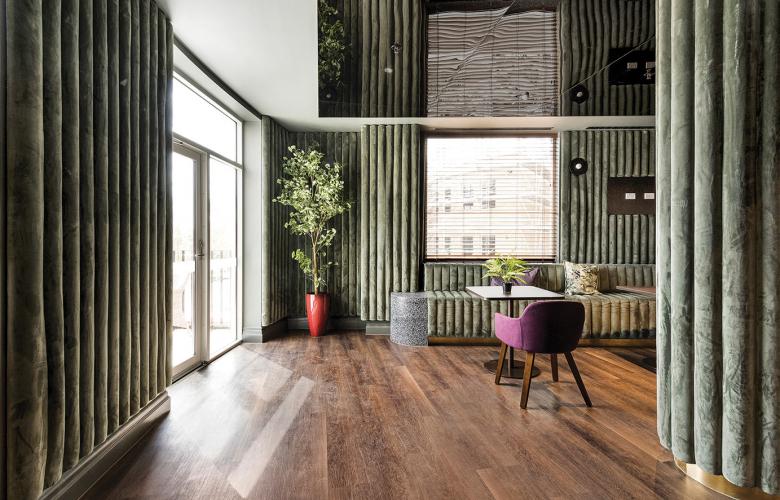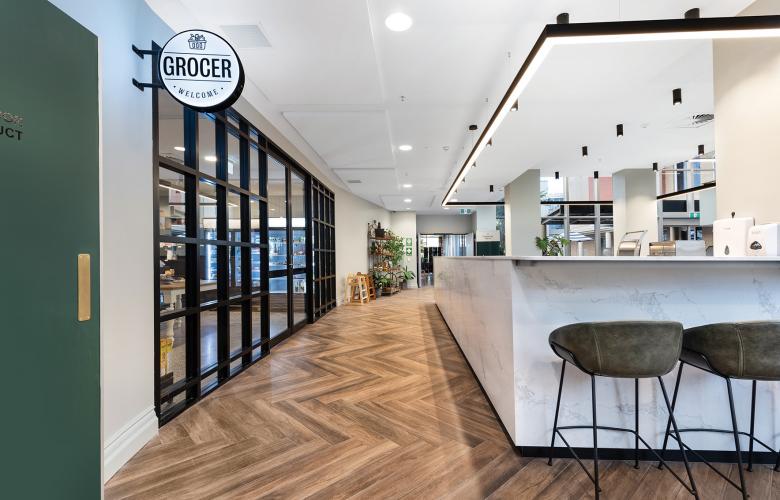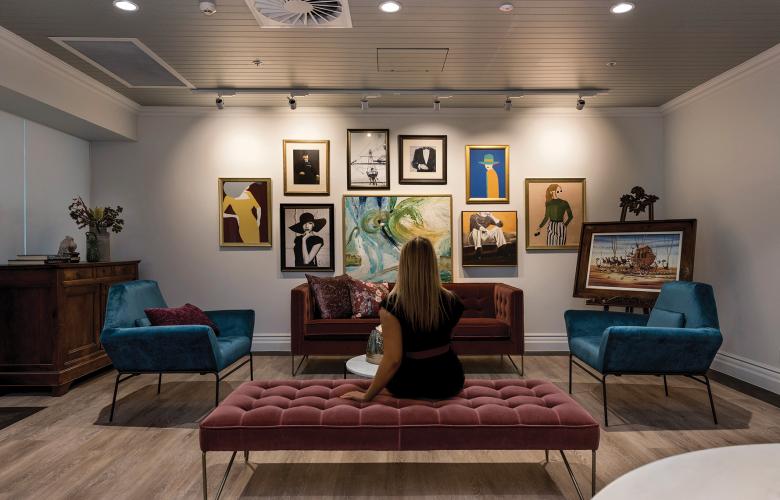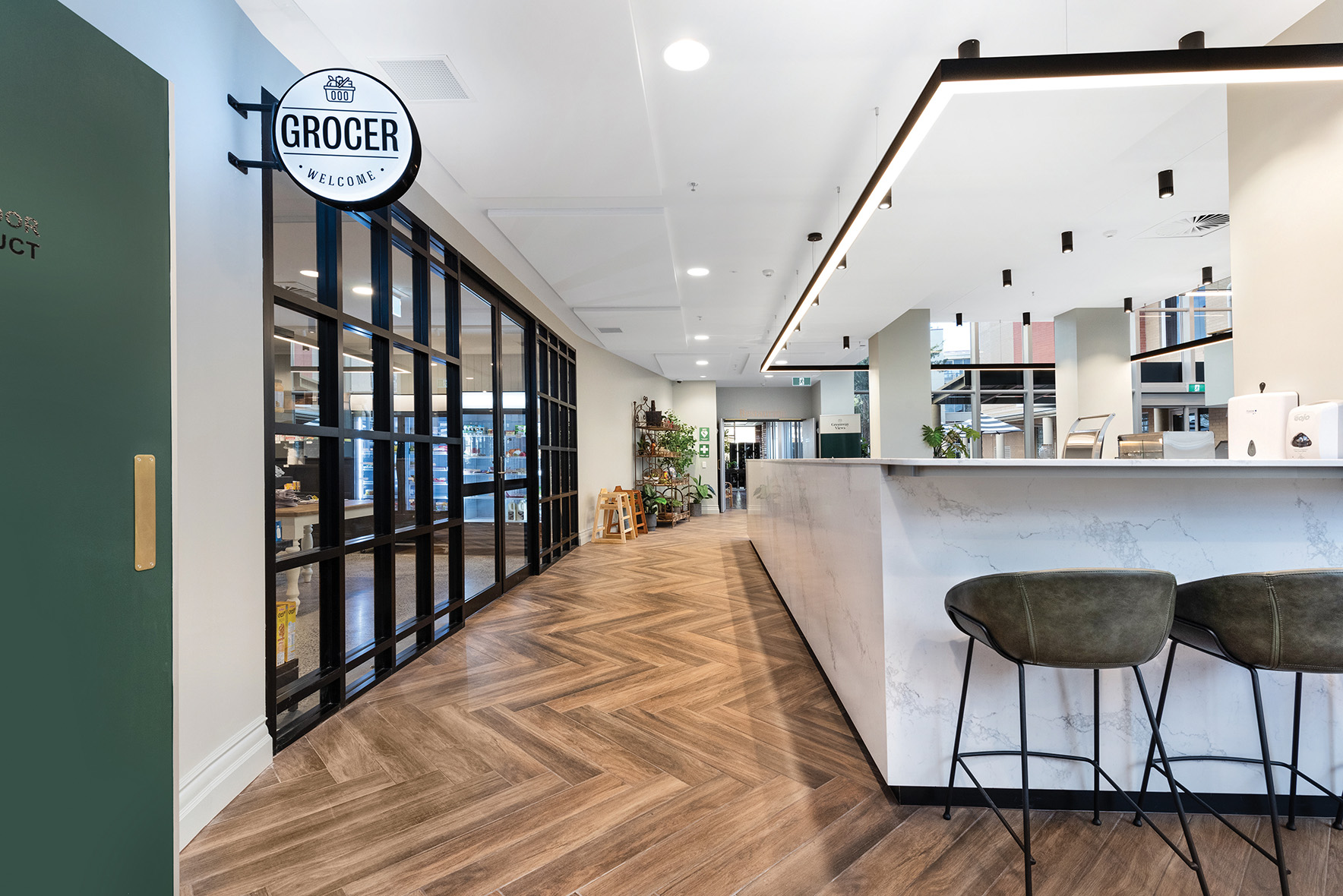Commercial office buildings ripe for more adaptive reuse aged care after Covid-19
Contact
Commercial office buildings ripe for more adaptive reuse aged care after Covid-19
Working with client LDK Healthcare and Cromwell Property, Gray Puksand created Greenway Views Seniors Living with an adaptive reuse model. “With the challenges of COVID-19 making working from home commonplace, the need for large CBD offices is diminishing and as such, is heightening the scope for adaptive reuse of some older buildings,” says Gray Puksand state managing partner Kevin Miles.
Working with client LDK Healthcare and Cromwell Property, Gray Puksand created Greenway Views Seniors Living with an adaptive reuse model. “With the challenges of COVID-19 making working from home commonplace, the need for large CBD offices is diminishing and as such, is heightening the scope for adaptive reuse of some older buildings,” says Gray Puksand state managing partner Kevin Miles.
After revitalising a former government office building in Canberra by converting it to aged care, design firm Gray Puksand says more older commercial buildings in the nation’s capital should be considered for sustainability benefits and to meet today’s demands.
Working with client LDK Healthcare and Cromwell Property, Gray Puksand created Greenway Views Seniors Living with an adaptive reuse model they say could become even more popular with the rise of flexible working, coupled with Australia’s ageing population.
The project has seen the old Department of Social Services buildings, comprising three stories and spanning three buildings, changed through an intensive process that combines Gray Puksand’s commercial and seniors living expertise across both architecture and interior design.
“With the challenges of COVID-19 making working from home commonplace, the need for large CBD offices is diminishing and as such, is heightening the scope for adaptive reuse of some older buildings,” says Gray Puksand state managing partner Kevin Miles.
“Canberra is perfect for this model given the high number of old government buildings, although the same can be done across cities in other states.
“Given the ageing of our population, and location of some underutilised buildings, it makes sense to give them new life with a seniors’ focus. We need to be looking at environmentally sustainable options for creating new aged care buildings that can retain the embodied energy of existing assets and remove the assumption that new builds in the sector are the only option.
“For those landlords that have perhaps C-grade assets, we really should be thinking about new ways they can be used that genuinely will meet market demand and the needs of society,” he adds.
The Greenway Views Seniors Living site suited the change in use because of its organic layout into separate blocks where some could be dedicated to social activity, along with an internal courtyard and existing auditorium space.
Factors to consider when assessing a conversion from commercial to seniors living include ceiling heights, distribution of air inside the building, accessibility for ambulances and the ability to incorporate health and wellbeing aspects.
“Key to a site when considering changing its use to aged care is the ability to create a community via amenity or services, the outlook for the residents whether it be overlooking a garden or a city view and the ability to make it feel like home,” says Gray Puksand director of interior design, Maria Correia.
“While the structure of the existing building is integral, interior design also plays a huge role in transforming environments and, in the case of Greenway Views, colour is a big factor in creating more personable spaces.”
A major similarity between the two typologies is the role of amenity and the community it creates, for instance, dining options and other services such as hairdressers.
In the same way as millennials, older people too crave connection to restaurants, theatres and social activity – which is often unachievable when located in outer suburbs or regional locations.
“Older people need to live in the city much more than we realise, for instance, many are no longer willing to drive but are happy to take public transport. Cities are energetic environments and importantly brings invigoration to people as they age.
“Particularly in a city such as Canberra, it is prompting a new wave of urban renewal. There is a growing trend toward active retirement consisting of leisure and activity, creating a need for more inner-city developments, naturally leading us as designers to consider adaptive reuse aged care,” adds Correia.










